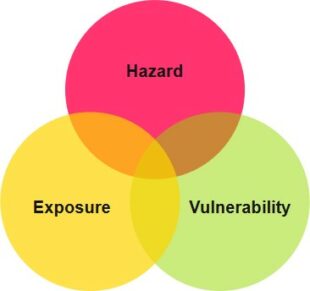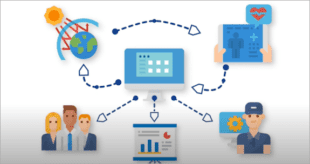The changing climate, and the requirement to transition to a low-carbon economy, mean businesses and governments will increasingly need access to decision-ready environmental information.
The Joint Centre for Excellence in Environmental Intelligence (JCEEI) is a world-leading collaboration between the UK Met Office and the University of Exeter providing the expertise, skills and capability to fully utilise Artificial Intelligence (AI) in order to address the escalating threat of climate change.
The Centre of Excellence builds on the South West region’s globally recognised strengths in environmental science and digital innovation. It works with partners to optimise environmental related decision-making, improve risk management and lead the UK towards a sustainable interaction with the natural environment and delivery of Net Zero – thus making it very important to a range of customers and sponsors within the UK (policy makers, businesses, and individuals).
In this article the co-Directors of the JCEEI, Professor Gavin Shaddick from the University of Exeter and Dr Kirstine Dale from the Met Office, discuss ‘CLIMAR’, the Centre’s revolutionary decision-making framework (Climate Impacts Mitigation, Adaption and Resilience). This framework uses data science and AI to integrate multiple sources of data to quantify and visualise the risks of climate change on populations, infrastructure and the economy.
What is Environmental Intelligence?
Environmental Intelligence (EI) uses rapid advances in AI and computing to extract meaning and value from vast amounts of environmental data. This is done to transform the UK’s understanding of the complex interactions between the environment, climate, natural ecosystems, and human social and economic systems.
EI will provide critical support to the global response to the effects of a changing climate on energy, food and water security, critical infrastructure, and health. It will transform the UK’s understanding of the future impacts of hotter and colder temperatures, flooding and drought on both people and their environment – ultimately saving lives and livelihoods.
Revolutionising decision-making processes
Three factors, when combined, present an opportunity to deliver transformative EI technologies that will transform the UK’s ability to tackle some of the biggest challenges facing society: access to volumes of environmental data orders of magnitude greater than previously available; the development of data science and AI tools and skills to interrogate the data; and increasingly powerful computing and technical infrastructure.
The CLIMAR framework estimates risks by looking at two data models. Firstly, it looks at models for climate related hazards, such as flooding, wind speeds and increased summer temperatures. It then looks at data models for assets, such as electricity substations, windfarms, roads and vulnerable members of the population, to understand their exposure to the hazard.
For context, climate risks are determined by how vulnerable we, and our surroundings, are when exposed to climate-related hazards. The risk of climate impact is the combination of three components: hazard; exposure; and vulnerability (as shown in the model below).
- Hazard - the possible, future occurrence of natural of human-induced physical events that may have adverse effects on vulnerable and exposed elements.
- Exposure - the inventory of elements in an area in which hazard events may occur, for example in the case of health effects which would be members of a population.
- Vulnerability - the propensity of exposed elements such as human beings, their livelihoods, and assets to suffer adverse effects when impacted by hazard events.

A schematic showing the integrated components of a climate impact risk
The CLIMAR framework creates decision-ready information in a form that is accessible to a range of audiences, including policy makers, industry and the public. Examples include:
- Quantifying the effects of increased temperatures on people’s health and wellbeing and the effectiveness of different ways of adapting buildings, e.g. improved ventilation, double glazing, to keep people cool and safe at home and work.
- Predicting where future flooding may occur under climate change, especially in areas where there hasn’t traditionally been a history of flooding, and predict targeted effects on electricity, transportation and communication networks, leading to reduced costs through early interventions and mitigation.
- Predicting future solar and wind yields for renewable energy under a changing climate and predict the effects of future extreme weather effects on energy system security, helping to ensure that approaches to delivering net zero are robust to changes in conditions under climate change.
This ability is going to be crucial across a wide variety of sectors in designing pathways to NetZero and enhancing the UK’s resilience to climate change.
Please visit this YouTube video on CLIMAR for more information.

A screenshot of the CLIMAR framework explained on YouTube
Real-world applications
CLIMAR is currently being used in a range of real-world applications, including energy system security, telecommunications, critical infrastructure, water and sewage networks, and health.
- Working with Bristol City Council on the effects of climate change on urban heat, inequalities between population groups and the efficacy of methods for adapting building stock to keep people cool, and safe, in periods of extreme heat.
- Working with a consortium led by the National Digital Twin Programme and the Centre for Digital Built Britain to develop a Climate Resilience Demonstrator, integrating climate projections with asset information and operational models to develop a Digital Twin that can be used to assess the future risks of flooding on critical infrastructure including energy, communications and water and sewage networks.
- Collaborating with The Alan Turing Institute, energy futures lab at Imperial College and the Universities of Edinburgh and Warwick to develop robust approaches that support decision-making on energy security and the transition to net zero.
For further information, please see www.jceei.org
Leave a comment